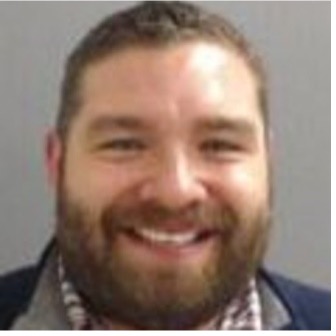Advanced Applications of HBPC™ Workshop – Faculty Spotlight
Date: 11|17|2022
Michael Helle, NRP/CCP/FP-C, MHA, MBA
Director, Clinical Programs – Office of Population Health
University of California, San Francisco
 About Helle
About Helle
Helle serves as Director, Clinical Programs for the Office of Population Health at UCSF. UCSF Health Accountable Care Organization is comprised of multiple commercial payers, a Medi-Cal alternative payment model with San Francisco Health Plan, multiple Medicare Advantage Plans, and other Medicare value-based care programs. In addition, Helle and his team support other clinical functions throughout UCSF Health.
A national registered critical care and flight paramedic since 1994, Helle has more than 25 years of leadership experience in emergency/trauma centers, outpatient services, case management, oncology and infusion services, and cardiovascular/interventional radiology. He holds a bachelor’s in biology from Minot State University, a dual MHA/MBA from American InterContinental University, and is a member of the American College of Healthcare Executives.
During HCCI’s Advanced Applications of HBPC™ workshop, Helle will lead and participate in a variety of discussions, including “What to Know About the Current Medicare Advanced Payment Models,” “Evaluating Productivity and Staffing in the House Call Program,” “HCC Coding and Risk Adjustment in Home-based Care,” and more.
How did you get involved with house calls?
It began when I joined UCSF. As a major medical research and teaching center, UCSF was one of HCCI’s first Centers of Excellence, and part of my role as director is to partner with HCCI in the teaching and development of the HBPC curriculum. Within UCSF’s population health programs, we have an HBPC program that serves homebound patients because, as an academic center, our goal is to keep beds open for tertiary and quaternary patient (e.g., transplants, severe heart failure, head bleeds, strokes, and all those conditions that need highly specialized care).
But if our hospital is full of primary and secondary diagnosis patients, we can’t meet our academic mission, which is to treat everyone who we need to treat. So, the home-based practice at UCSF has become crucial in keeping non-critical patients out of the emergency department and out of the hospital. Our geriatricians do a lot of acute management in the home. We do our own labs, radiology, EKGs, ultrasounds—everything you would do in an emergency department—right through to making the decision of whether a patient needs to be admitted.
How will learners benefit from the HCCI workshop?
When people think about home-based primary care, they don’t always realize how much work goes into it. It’s very different from being a provider in a primary care office where 10 to 12 patients come to the provider a day, and there’s office staff to manage the referrals and provide other support. So, for people who are just getting started or who are thinking about getting started in HBPC, I think HCCI’s Essential Elements workshop is a solid resource that provides the basics of how to run a practice. Then, as you think about growing an HBPC practice, the Advanced Applications workshop digs deeper into both clinical and operational subjects that can really help practices thrive.
What’s your most memorable HCCI workshop moment?
What stands out the most is probably the different mindsets that we see in our learners. For example, the first group I taught was made up of very seasoned clinicians. Some already had experience doing HBPC, while others, mostly internal medicine doctors from large practices, were just starting to explore getting into HBPC. As we presented and discussed different patient cases, the clinicians with prior HBPC experience tended to take a holistic approach toward treatment while the others (who were accustomed to high levels of support in a clinic or hospital) were more likely to want to order test after test or send patients to the emergency department. Part of what we’re doing in the workshops is helping clinicians learn to think in a fundamentally different way by looking at the whole picture—the patient, caregivers, home environment—and evaluating what is best for the patient.